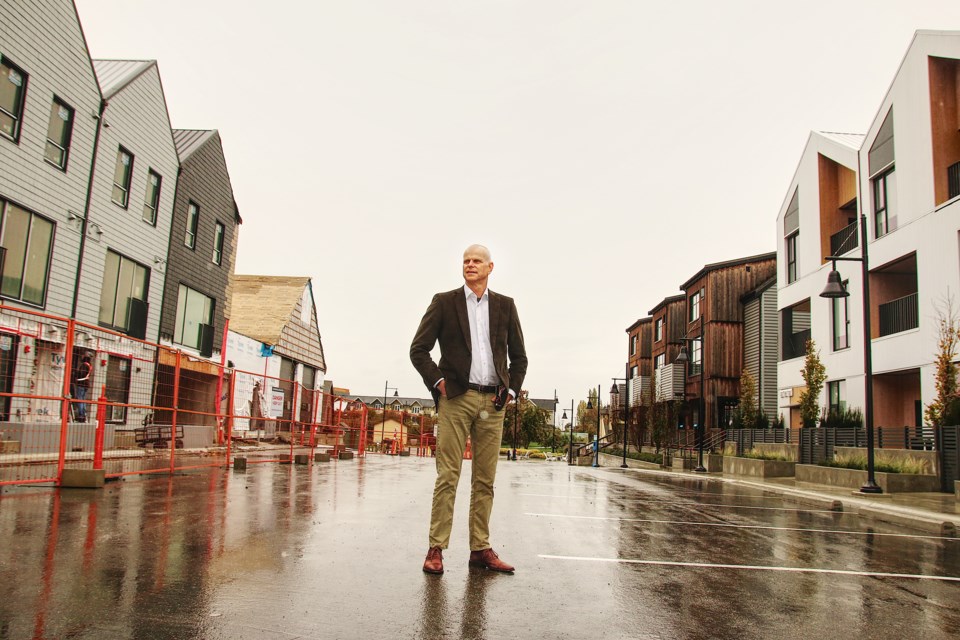No. 1: Edmonton
Edmonton was named the most affordable city in Canada for renters in a national survey this year and it has the among the lowest and most stable housing prices in the country, according to the Canadian Real Estate Association. In Alberta’s capital city the average one-bedroom rent is $1,130, unchanged in a year; the average September home price was $374,100, 3.8 per cent less than a year earlier and 57 per cent below the national average.
For pragmatic commercial investors Edmonton means opportunity, especially for multi-family investors. The average apartment building sells for $134,000 per door, according to Avison Young, which notes record levels of immigration are driving apartment demand “ which has suppressed the vacancy rate to a seven-year low.” Multi-family capitalization rates average a healthy 5 per cent.
Meanwhile Edmonton’s industrial market saw positive absorption for 12 straight quarters with no signs of a slowdown. With a vacancy rate of 4.3 per cent, 2 million square feet under construction and average lease rates the second lowest in Canada at $10.57 per square foot, industrial investors from Vancouver, Calgary and Toronto will be turning to affordable, accessible Edmonton in 2024.
No. 2: Terrace, B.C.
Terrace is a 30-minute drive from Kitimat, where the $40 billion liquefied natural gas terminal will complete in in 2024 as the biggest resource project in Canadian history.
And Terrace is where the regional residents shop and live, opening opportunities for retail and residential real estate.
“Terrace is the only livable community within commuting distance to Kitimat,” said Elena Yelizarov of EXP Realty, Vancouver.
Terrace’s population is expected to double over the next five years as billions of dollars in development, including a new surgical hospital, schools and industrial projects transform the area. Yelizarov is working with Swiss Real on a 21-unit detached house subdivision aimed at investors, where the new four-bedroom houses sell for $675,000 and have guaranteed corporate rent for two years at $6,000 per month, with renewal options. Half the development is sold.
Terrace bucked a trend of declining housing prices in the north this year, with average prices increasing to $500,716, just behind Prince George, the largest northern city, according to the Northern B.C. Real Estate Board.
No. 3: South Delta, B.C.
South Delta is the two towns of Tsawwassen and Ladner in an area of intense development and investment starting in 2024. This September the $3.5 billion Roberts Bank terminal expansion was given the greenlight by B.C.’s ministers of Environment and Transportation. The massive project doubles the footprint of the current Deltaport terminal and will increase the overall container capacity on the coast by 30 per cent. Meanwhile, work also begins in 2024 on the new George Massey Tunnel, a $4.15 billion eight-lane, toll-free immersed “tube tunnel” under the Fraser River linking South Delta to Richmond.
Despite the huge investments, Sean Hodgins, president of Century Group, who is developing the mixed-use Southlands project in Tsawwassen and planning to redevelop a Tsawwassen mall into a retail and residential high-rise complex, said the “two big factors” for South Delta’s success are simply good schools and public safety.
“We have excellent schools here and the Delta has had its own police force for 100 years; this is a very safe community,” Hodgins said.
No. 4: Saskatoon, SK
Saskatoon makes our go-to list for 2024 for its steady demand, affordable prices and potential returns in retail, multi-family and industrial real estate.
Saskatchewan will post 2 per cent GDP growth in 2024, among the leading provinces during a muted year, according to the Conference Board of Canada. The board notes strength in agriculture and mining and, right on cue, the $7.5 billion BHP Jansen mine – biggest potash mine on earth - has started north of Saskatoon with a promise of 2,500 jobs. The mine will push demand in Saskatoon’s industrial sector, which has the third-lowest vacancy rate (1.6 per cent) in Canada, while rising demand could drive new space to a record high $15 per square foot in 2024, Colliers forecasts.
Saskatchewan’s largest city with 300,000 residents, Saskatoon has high household incomes, yet the average home price is $378,800, among Canada’s lowest, and a one-bedroom rents for a comparatively low $1,075. The city is home to the University of Saskatchewan and one of Canada’s most prominent biotechnology research centres.
No.5: Lethbridge AB
Lethbridge does not have a deep oil and gas industry and that has proven a strength in recent years as it had the space and the low land prices to attract mega agri-players such as McCain Foods Ltd., Cavendish Farms Inc. and PIP International Inc. which are all building or expanding processing plants in the community. With 2,400 acres of industrial land within the city boundaries and 934 acres available for development, the city is positioned well for growth.
One can buy home in Lethbridge for less than $340,000 and a one-bedroom apartment rents for an average of $1,200. The combination of high job growth, low housing costs and projected population growth of 5 per cent will lead to a retail boom in 2024, says Avison Young.
“Retail real estate in Lethbridge has had sustained growth since 2020, with no signs of slowing down,” said Jeremy Roden, executive vice-president in the Avison Young Lethbridge office.



